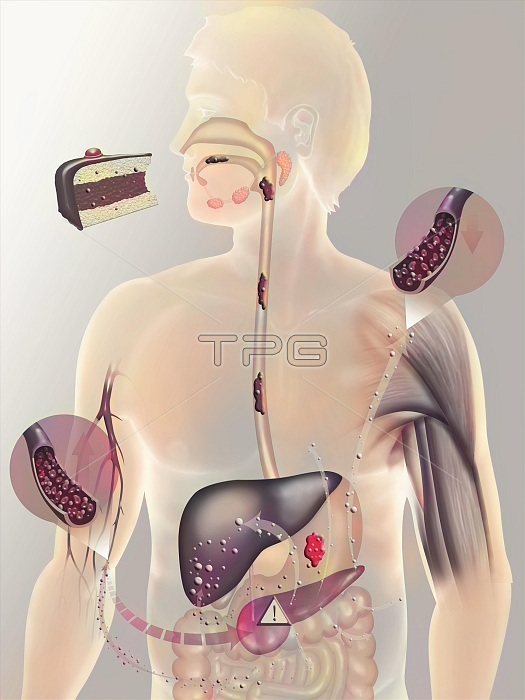
Secretion of insulin on a person with diabetes type 2. Diabetes type 2 (or non-insulin-dependent) is a form of diabetes mellitus affecting mainly adults over 40 due to a food too rich in fat, the metabolism of glucose is very perturbated. The muscle cells do not respond normally to the action of insulin, that is responsible for indicating them to let glucose enter to make glycemia decrease (rate of sugar in the blood). The ingestion of a sweetened aliment causes an increase of glycemia (glucose in blue). This provoks the secretion of insulin (in yellow) by the pancreas, that is sent to different organs of the body to stimulate the use of glucose, mainly towards the muscles and the spleen. Thereby, glucose will be either transformed into glycogen (in green) to be stocked in the liver and the muscles, or either used by the other organs. This will then make the rate of blood sugar decrease. On the patient with diabetes type 2, often in overweight, the secretion of insulin by the pancreas is insufficient to cover the needs , so the rate of blood sugar remains high despite the production of insulin by his pancreas. See. images 8814206 for the metabolism of glucose on a non-diabetic individual, 8813806 for the diabetes type 1 and 8810806 for the diabetes type 2 on a feminine silhouette.
| px | px | dpi | = | cm | x | cm | = | MB |
Details
Creative#:
TOP27035376
Source:
達志影像
Authorization Type:
RM
Release Information:
須由TPG 完整授權
Model Release:
N/A
Property Release:
Right to Privacy:
No
Same folder images:

 Loading
Loading